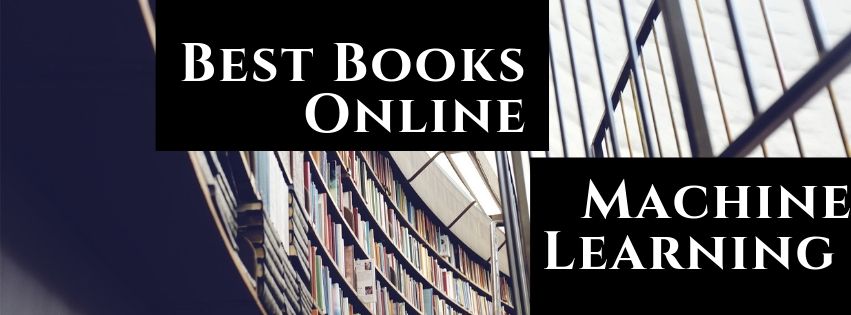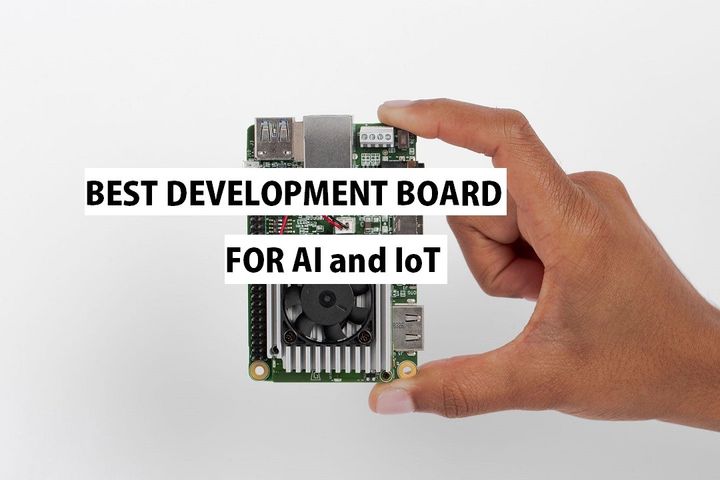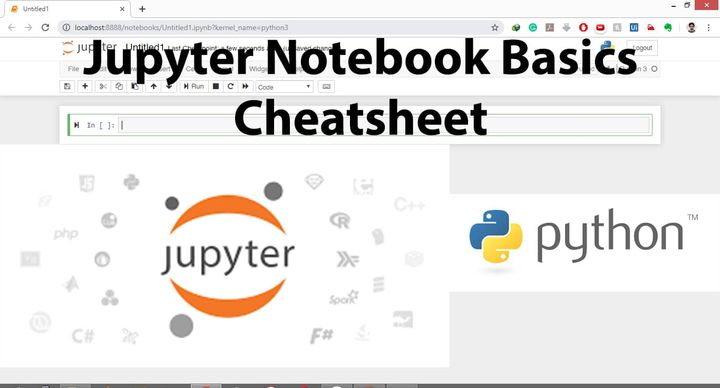Best Machine Learning Books.

This article is focused on the best machine learning book available online.
The books listed are suitable for both beginners and advanced students of machine learning and artificial intelligence.
This book is written to provide a strong foundation in machine learning using Python libraries by providing real-life case studies and examples. It covers topics such as foundations of machine learning, introduction to Python, descriptive analytics and predictive analytics. Advanced machine learning concepts such as decision tree learning, random forest, boosting, recommended systems, and text analytics are covered. The book takes a balanced approach between theoretical understanding and practical applications. All the topics include real-world examples and provide step-by-step approach on how to explore, build, evaluate, and optimize machine learning models.
Graphics in this book are printed in black and white. Through a series of recent breakthroughs, deep learning has boosted the entire field of machine learning. Now, even programmers who know close to nothing about this technology can use simple, efficient tools to implement programs capable of learning from data. This practical book shows you how. By using concrete examples, minimal theory and two production-ready Python frameworksóscikit-learn and TensorFlowóauthor AurÈlien GÈron helps you gain an intuitive understanding of the concepts and tools for building intelligent systems. Youíll learn a range of techniques, starting with simple linear regression and progressing to deep neural networks. with exercises in each chapter to help you apply what youíve learned, all you need is programming experience to get started.
You’ll learn the steps necessary to create a successful machine-learning application with Python and the scikit-learn library. Authors Andreas MŸller and Sarah Guido focus on the practical aspects of using machine learning algorithms, rather than the math behind them. Familiarity with the NumPy and matplotlib libraries will help you get even more from this book.
Introduction to Machine Learning, Python and Jupyter
Learn about Feature Engineering and Data Visualization using real world data sets
Learn various regression and classification techniques
Deep Learning and Neural network concepts and practical covered
Text Analysis, Recommendation engines and Time Series Analysis
Jupyter notebook scripts are provided with dataset used to test and try the algorithms
This practical guide provides nearly 200 self-contained recipes to help you solve machine learning challenges you may encounter in your daily work. If you’re comfortable with Python and its libraries, including pandas and scikit-learn, you’ll be able to address specific problems such as loading data, Handling text or numerical data, model selection, and dimensionality reduction and many other topics.Each recipe includes code that you can copy and paste into a toy dataset to ensure that it actually works. From there, you can insert, combine, or adapt the code to help construct your application. Recipes also include a discussion that explains the solution and provides meaningful context. This cookbook takes you beyond theory and concepts by providing the nuts and bolts you need to construct working machine learning applications.
Implement machine learning and deep learning methodologies to build smart, cognitive AI projects using Python Key Features A go-to guide to help you master AI algorithms and concepts 8 real-world projects tackling different challenges in healthcare, e-commerce, and surveillance Use TensorFlow, Keras, and other Python libraries to implement smart AI applications Book DescriptionThis book will be a perfect companion if you want to build insightful projects from leading AI domains using Python. The book covers detailed implementation of projects from all the core disciplines of AI. We start by covering the basics of how to create smart systems using machine learning and deep learning techniques. You will assimilate various neural network architectures such as CNN, RNN, LSTM, to solve critical new world challenges. You will learn to train a model to detect diabetic retinopathy conditions in the human eye and create an intelligent system for performing a video-to-text translation. You will use the transfer learning technique in the healthcare domain and implement style transfer using GANs. Later you will learn to build AI-based recommendation systems, a mobile app for sentiment analysis and a powerful chatbot for carrying customer services. You will implement AI techniques in the cybersecurity domain to generate Captchas. Later you will train and build autonomous vehicles to self-drive using reinforcement learning. You will be using libraries from the Python ecosystem such as TensorFlow, Keras and more to bring the core aspects of machine learning, deep learning, and AI.
– This book offers the readers The basics of machine learning in a very simple, user-friendly language. While browsing the table of Contents, you will realize that you are given an introduction to every concept that comes under the umbrella of machine learning. This book is aimed at students who are new to the topic of machine learning. It is meant for students studying machine learning in their undergraduate and postgraduate courses in information Technology. It is also aimed at computer engineering students. It will help familiarize students with the Terms and terminologies used in machine learning. We hope that this book serves as an entry point for students to pursue their future studies and careers in machine learning
The concept of Artificial Intelligence (AI) & Machine Learning (ML) has been in practice for over years with the advent of technological progress. Over time, it has blended our lives through nearly every narration of learning, teaching, enjoyment, normal routine operations and what not.
The aspect delivers a common understanding of the topics with reference to it making an impact on our lives, with a better framework of technology affecting our lives in particular. Let us look up to science for a change to be brought about in us. Let us create awareness of making technology available to people, in a broader sense. As that happens, people who are responsible need to be told about the use and misuse of the same.
Peter Norvig, Research Director at Google, co-author of AIMA, the most popular AI textbook in the world: “Burkov has undertaken a very useful but impossibly hard task in reducing all of machine learning to 100 pages. He succeeds well in choosing the topics — both theory and practice — that will be useful to practitioners, and for the reader who understands that this is the first 100 (or actually 150) pages you will read, not the last, provides a solid introduction to the field.”
Programming Collective Intelligence takes you into the world of machine learning and statistics, and explains how to draw conclusions about user experience, marketing, personal tastes, and human behavior in general — all from information that you and others collect every day. Each algorithm is described clearly and concisely with code that can immediately be used on your web site, blog, Wiki, or specialized application. Each chapter includes exercises for extending the algorithms to make them more powerful. Go beyond simple database-backed applications and put the wealth of Internet data to work for you.
If you’re an experienced programmer interested in crunching data, this book will get you started with machine learning—a toolkit of algorithms that enables computers to train themselves to automate useful tasks. Authors Drew Conway and John Myles White help you understand machine learning and statistics tools through a series of hands-on case studies, instead of a traditional math-heavy presentation.
Each chapter focuses on a specific problem in machine learning, such as classification, prediction, optimization, and recommendation. Using the R programming language, you’ll learn how to analyze sample datasets and write simple machine learning algorithms. Machine Learning for Hackers is ideal for programmers from any background, including business, government, and academic research.
- Develop a naïve Bayesian classifier to determine if an email is spam, based only on its text
- Use linear regression to predict the number of page views for the top 1,000 websites
- Learn optimization techniques by attempting to break a simple letter cipher
- Compare and contrast U.S. Senators statistically, based on their voting records
- Build a “whom to follow” recommendation system from Twitter data
This textbook provides a single source introduction to the primary approaches to machine learning. It is intended for advanced undergraduate and graduate students, as well as for developers and researchers in the field. No prior background in artificial intelligence or statistics is assumed. Several key algorithms, example date sets and project- oriented home work assignments discussed in the book are accessible through the World Wide Web.
A radical and optimistic view of the future course of human development from the bestselling author of How to Create a Mind and who Bill Gates calls ‘the best person I know at predicting the future of artificial intelligence.’
During the past decade there has been an explosion in computation and information technology. With it have come vast amounts of data in a variety of fields such as medicine, biology, finance, and marketing. The challenge of understanding these data has led to the development of new tools in the field of statistics, and spawned new areas such as data mining, machine learning, and bioinformatics. Many of these tools have common underpinnings but are often expressed with different terminology. This book describes the important ideas in these areas in a common conceptual framework. While the approach is statistical, the emphasis is on concepts rather than mathematics. Many examples are given, with a liberal use of color graphics. It is a valuable resource for statisticians and anyone interested in data mining in science or industry. The book’s coverage is broad, from supervised learning (prediction) to unsupervised learning. The many topics include neural networks, support vector machines, classification trees and boosting—the first comprehensive treatment of this topic in any book.
This book, together with specially prepared online material freely accessible to our readers, provides a complete introduction to Machine Learning, the technology that enables computational systems to adaptively improve their performance with experience accumulated from the observed data. Such techniques are widely applied in engineering, science, finance, and commerce. This book is designed for a short course on machine learning. It is a short course, not a hurried course.
This is the first textbook on pattern recognition to present the Bayesian viewpoint. The book presents approximate inference algorithms that permit fast approximate answers in situations where exact answers are not feasible. It uses graphical models to describe probability distributions when no other books apply graphical models to machine learning. No previous knowledge of pattern recognition or machine learning concepts is assumed .
This edition captures the changes that have taken place in the field of artificial intelligence (AI) since the last edition in 2003. There have been important applications of AI technology, such as the widespread deployment of practical speech recognition, machine translation, autonomous vehicles and household robotics. There have been algorithmic landmarks, such as the solution of the game of checkers. There has also been a great deal of theoretical progress, particularly in areas such as probabilistic reasoning, machine learning and computer vision.
A great building requires a strong foundation. This book teaches basic Artificial Intelligence algorithms such as dimensionality, distance metrics, clustering, error calculation, hill climbing, Nelder Mead, and linear regression. These are not just foundational algorithms for the rest of the series, but are very useful in their own right. The book explains all algorithms using actual numeric calculations that you can perform yourself.Artificial Intelligence for Humans is a book series meant to teach AI to those without an extensive mathematical background. The reader needs only a knowledge of basic college algebra or computer programminganything more complicated than that is thoroughly explained. Every chapter also includes a programming example. Examples are currently provided in Java, C#, R, Python and C. Other languages planned.
Paradigms of AI Programming is the first text to teach advanced Common Lisp techniques in the context of building major AI systems. By reconstructing authentic, complex AI programs using state-of-the-art Common Lisp, the book teaches students and professionals how to build and debug robust practical programs, while demonstrating superior programming style and important AI concepts. The author strongly emphasizes the practical performance issues involved in writing real working programs of significant size. Chapters on troubleshooting and efficiency are included, along with a discussion of the fundamentals of object-oriented programming and a description of the main CLOS functions. This volume is an excellent text for a course on AI programming, a useful supplement for general AI courses and an indispensable reference for the professional programmer.
Intelligent agents are employed as the central characters in this introductory text. Beginning with elementary reactive agents, Nilsson gradually increases their cognitive horsepower to illustrate the most important and lasting ideas in AI. Neural networks, genetic programming, computer vision, heuristic search, knowledge representation and reasoning, Bayes networks, planning, and language understanding are each revealed through the growing capabilities of these agents. A distinguishing feature of this text is in its evolutionary approach to the study of AI. This book provides a refreshing and motivating synthesis of the field by one of AI’s master expositors and leading researches.
Algorithms increasingly run our lives. They find books, movies, jobs, and dates for us, manage our investments, and discover new drugs. More and more, these algorithms work by learning from the trails of data we leave in our newly digital world. Like curious children, they observe us, imitate, and experiment. And in the world’s top research labs and universities, the race is on to invent the ultimate learning algorithm: one capable of discovering any knowledge from data, and doing anything we want, before we even ask.Machine learning is the automation of discovery,the scientific method on steroids,that enables intelligent robots and computers to program themselves. No field of science today is more important yet more shrouded in mystery. Pedro Domingos, one of the field’s leading lights, lifts the veil for the first time to give us a peek inside the learning machines that power Google, Amazon, and your smartphone.



